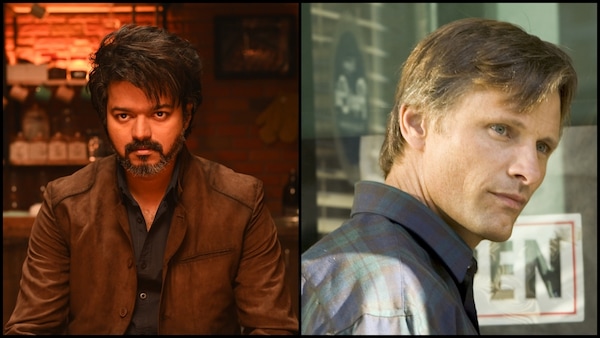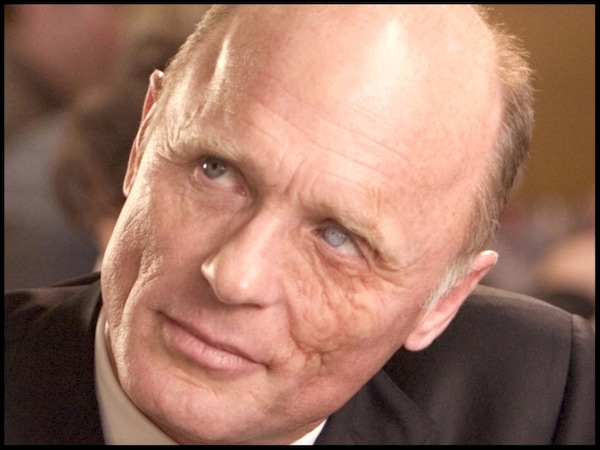Revisiting A History of Violence, the 2005 film that inspired Lokesh Kanagaraj's 'Leo'
With Lokesh Kangaraj's latest film bringing back the David Cronenberg classic into relevance, let's take a deeper look at the 2005 film and its thematic value.

Last Updated: 04.52 PM, Oct 20, 2023
With Leo, Lokesh Kanagaraj might have pulled off a great feat in more than just one way. On the one hand, his latest film Leo has hit the ground running at the box office and is said to have secured a thumping opening day score of more than Rs. 140 crores worldwide. Simultaneously, one also hears of Thalapathy Vijay being in top form in this actioner which, in trademark Lokesh Kanagaraj ways, features a huge ensemble cast comprising Sanjay Dutt, Trisha, Arjun Sarja, Gautham Vasudev Menon, Mysskin and several others.
But what Leo also does, quite interestingly, is it brings back the 2005 film A History of Violence back into the discussion. Many would have already come across the comparisons that are being drawn between Leo and A History of Violence, with the former admittedly inspired by the David Cronenberg classic. Vijay assumes the same spirit in the Tamil film that Viggo Mortensen did with great gusto but despite all the similarities between the two films, one might find Lokesh Kanagaraj's version to be idiosyncratically different. One might even say that he rides the thin line dividing inspiration and forgery pretty well but the final verdict on this is perhaps best left with the viewer. For now, let's deal with the simple task of revisiting Cronenberg's film.
What is A History of Violence all about?
Just as the title suggests, the film deals with the violent past that a seemingly ordinary man withholds from his family, his town folk and most likely, even himself. Viggo Mortensen plays Tom Stall, the ordinary man in question who leads an unassuming life comprising a local diner in a small town in Indiana, USA, a loving wife Edie, a son Jack and a daughter Sarah. It's almost as though Stall lives in a Frank Capra-like world, wherein Tom Stall is seen as the model citizen who could put no foot wrong. Until Leland Jones and Billy Orser arrive to topsy-turvy things.
Jones and Orser, of course, are the two killers on the spree who spot Stall's diner as their next target, knowing little about what the owner of the place is capable of. The killers cite the new gig as any ordinary one, but Tom Stall fends them off and even kills them with such precision and skill that those around him aren't just impressed but also a little alarmed. David Cronenberg is masterful in executing this scene which not only comes as a big revelation to the audience but also comes as a major tonal shifter in the film, which now is no longer the sappy slice-of-life film but a brooding crime drama about the duality a violent man has been living with. It's the first and the most alluring revelation of Joey Cusack, the man Stall had buried within him.
What ensues after Tom Stall's bravado act has little to do with the plot but more to do with the exposition of the same duality. Stall, not surprisingly, because the talk of the town and a media darling but he wants none of it. Cronenberg dials down the pace further at this juncture and starts to reveal small but exceptional details concerning his protagonist's life. Tom Stall's family, particularly his wife and his teenage son Jack, who idolised him up till that point, are shell-shocked but the director's focus still remains on the central character because he is chasing a different goal through the narrative. As much as A History of Violence is about self-explanatory violence, David Cronenberg does not eulogize his leading man nor does he head in the 'male fantasy' direction, wherein he is found salivating over just how 'heroic' and 'macho' his hero is.
That doesn't mean that the film doesn't have its share of graphic violence. It does but it is all put together as part of a larger pursuit that we understand where Joey Cusack ends and where Tom Stall begins. Famed critic Roger Ebert analyzes in his 2005 review of the film that if it wasn't for Joey, Tom would have been the victim of that stickup job the other night, meaning despite all the sincerity, one man could not be separated from the other. In these very larger pursuits, Cronenberg introduces a number of fascinating characters like Carl Fogarty (Ed Harris), Richie Cusack (William Hurt) and Sheriff Sam Carney (Peter MacNeill) who expose various facets of Tom/Joey.

Viggo Mortensen, who would go on to work with David Cronenberg on films like Eastern Promises, A Dangerous Method and Crimes of the Future, delivers a supremely compelling performance and so do Mario Bello, Ed Harris and William Hurt. A History of Violence is based on the graphic novel of the same name, which is authored by John Wagner and illustrated by Vince Locke. Here's the trailer of the film:

